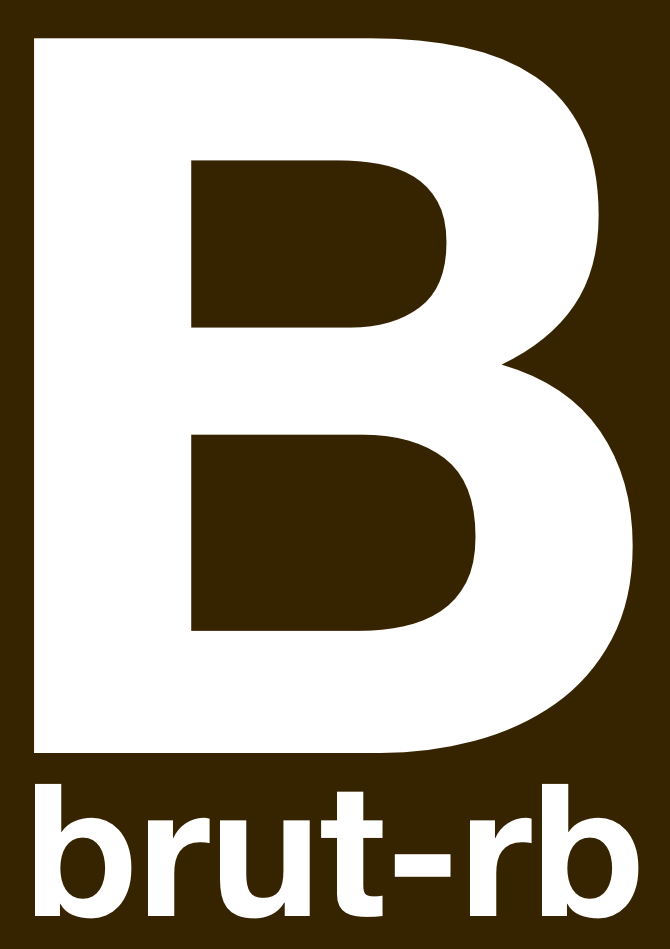Brut: A New Web Framework for Ruby
July 08, 2025 📬 Get My Weekly Newsletter ☞

Brut aims to be a simple, yet fully-featured web framework for Ruby. It's different than other Ruby web frameworks. Brut has no controllers, verbs, or resources. You build pages, forms, and single-action handlers. You write HTML, which is generated on the server. You can write all the JavaScript and CSS you want.
Here’s a web page that tells you what time it is:
class TimePage < AppPage
def initialize(clock:)
@clock = clock
end
def page_template
header do
h1 { "Welcome to the Time Page!" }
TimeTag(timestamp: @clock.now)
end
end
end
Brut is built around low-abstraction and low-ceremony, but is not low-level like Sinatra. It’s a web framework. Your Brut apps have builtin OpenTelemetry-based instrumentation, a Sequel-powered data access layer, and developer automation based on OptionParser-powered command-line apps.
Brut can be installed right now, and you can build and run an app in minutes. You don’t even have to install Ruby.
> docker run \
-v "$PWD":"$PWD" \
-w "$PWD" \
-it \
thirdtank/mkbrut \
mkbrut my-new-app
> cd my-new-app
> dx/build && dx/start
> dx/exec bin/setup
> dx/exec bin/dev
# => localhost:6502 is waiting
There’s a full-fledged example app called ADRs.cloud you can run right now and see how it works.
What You Get
Brut has extensive documentation, however these are some highlights:
Brut’s core design is around classes that are instantiated into objects, upon which methods are called.
- No excessive
includecalls to create a massive blob of functions. - No Hashes of Whatever. Your session, flash, and form parameters are all actual classes and defined data types.
- Minimal reliance of dynamically-defined methods or
method_missing. Almost every method has documentation.
Brut leverages the modern Web Platform.
- Client-side and server-side form validation is unified into one user experience.
- BrutJS is an ever-evolving library of autonomous custom elements AKA web components to progressively enhance your HTML.
- With esbuild, you can write regular CSS and have it instantly packaged, minified, and hashed. No PostCSS, No SASS.
Brut sets up good practices by default.
- Your app will have a reasonable content security policy.
- Your database columns aren’t null by default.
- Your foreign keys will a) exist, b) be indexed, and c) not be nullable by default.
- Time, available through Brut’s
Clock, is always timezone-aware. - Localization is there and is as easy as we can make it. We hope to make it easier.
Brut uses awesome Ruby gems
- RSpec is how you write your tests. Brut includes custom matchers to make it easier to focus on what your code should do.
- Faker and FactoryBot will set up your test and dev data
- Phlex generates your HTML. No, we won’t be supporting HAML.
Brut doesn’t recreate configuration with YAML.
- I18n uses the i18n gem, with translations in a Ruby Hash. No YAML.
- Dynamic configuration is in the environment, managed in dev and test by the dotenv gem. No YAML.
- OK, the dev environment’s
docker-compose.dx.ymlis YAML. But that’s it. - YAML, not even
oncetwice.
Brut doesn’t create abstractions where none were needed.
- Is this the index action of the widgets resource or the show action of the widget-list resource? is a question you will never have to ask yourself or your team. The widgets page is called
WidgetsPageand available at/widgets. - My
Widgetsclass accesses theWIDGETStable, but it also has all the domain logic of a widget! No it doesn’t.DB::Widgetgets your data. You can makeWidgetdo whatever you want. Heck, make aWidgetServicefor all we care! - What if our HTML had controllers but they were not the same as the controllers in our back-end? There aren’t any controllers. You don’t want them, you don’t have to make them.
- What about monads or algebraic data types or currying or maybe having everything
be a
Procbecausecall?! You don’t have to understand any part of that question. But if you want your business logic to use functors, go for it. We won’t stop you.
WHY?!?!?!
I know, we can vibe away all the boilerplate required for Rails apps. But how much fun is that? How much do you enjoy setting up RSpec, again, in your new Rails app? How tired are you of changing the “front end solution” every few years? And aren’t you just tired of debating where your business logic goes or if it’s OK to use HTTP DELETE (tunneled over a _method param in a POST) to archive a widget?
I know I am.
I want to have fun building web apps, which means I want write Ruby, use HTML, and leverage the browser. Do you know how awesome browsers are now? Also, Ruby 3.4 is pretty great as well. I’d like to use it.
What I don’t want is endless flexibility, constant architectural decision-making, or pointless debates about stuff that doesn’t matter.
I just want to have fun building web apps.
Next Steps
I will continue working toward a 1.0 of Brut, building web apps and enjoying the process. I hope you will, too!
